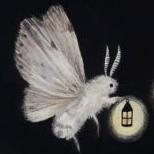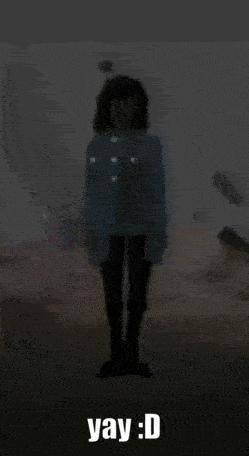-
Posts
137 -
Joined
-
Last visited
-
Days Won
9
ferrum.wav last won the day on June 27 2025
ferrum.wav had the most liked content!
About ferrum.wav

- Birthday 08/23/2004
Profile Information
-
Biography
me compose stuf
-
Gender
Male
-
Interests
Video Games (Current: Deltarune, DDLC, TF2, Half-Life, Portal)
-
Favorite Composers
Mahler, Poulenc, R. Strauss, Ravel, Prokofiev, Korngold, Kapustin, Sibelius, Rachmaninoff.
-
My Compositional Styles
Neo-Romantic.
-
Notation Software/Sequencers
FLStudio, Musescore
Recent Profile Visitors
3,976 profile views
ferrum.wav's Achievements
-
ferrum.wav started following Romance for Oboe, Viola, and Piano , Who wants to help on a Lied? , A Christmas Mash-up and 2 others
-
#3, the date is unknown for this one, but i remember writing this during a final term in high school (2021 maybe). it was cold and rainy outside. i finished early and decided to write. i hadn't titled this one so i decided to do so for this post Unease Sunshine saw me walk He whispers nervousness through my ears I sit on my wooden chair Calmness to crowdness out of leash Maybe he's right, the first tends to brute I wait for the master to come Each seconds send waves of arrows to my soul Each noise amplifies the burden on my mind Burden of the final trial It laughs at me everyday The guidance who speaks wisdom I despise to escapism Lost in the snow of thoughts I try to find composure Anxiety then pulls me back She neatly imprisons me I love anxiety Her company when I'm alone Her hands multiplying those weights to keep attention Let me see unreal possibilities beyond comprehension aight, those are all the poems that i could find, hope you like them !!!
-
okay, for some context, i had to dig up an old friend's old discord dms to find these. also, i dunno your expectations on these but i hope they're good enough? they are very old so my writing skills were...meh i guess i dunno. you can pick/use/choose any of 'em. #1, this is from october 2018. i think this is about the time that i was discovering my feelings for somebody for the first time ever. i was clueless lmao Question. Once upon a time In a day with lots of rhyme In a school with students learning In a break with never ending I saw a lady Who walks silently Towards the cafeteria With none other than her friends I cant believe what i just witness As i stopped walking because her sweetness As the lady smiling beautifully But, I don't know what to expect A year passed My feelings lasts But there is a question That needs an attention "How do i get to her?" I asked "When is the time?" I shrieked "Where is the place? " I reflected But I'm afraid, I'll be rejected I saw the lady everyday Finally i knew her name With the feelings of lame But, when do i get her? The same question popped up As the curiosity blows up But when do i get the answer When she doesn't even give me a letter? I tried to give the lady a letter With thought that i will get to her But the reality have really shown me That the lady did not even read the letter The same question popped up As the curiosity blows up But when do i get the answer When the lady didn't even read the letter? #2, this is from november 2018 Time's One time, i look at the window With the sadness being so low I enjoyed the beautiful noon And i wished it won't be gone so soon A month passed I saw a tower being constructed I like that tower So my happiness still in me later 2 months passed There's no birds around I felt kinda sad But there's no sign of anything bad. 4 months really passed away The scenery changes really quickly As my word become more badly I felt like the old times are really done I felt like the happiness are really gone Usually i like new good things But this time, it really stinks It stinks like an old socks That are left in the ship's docks Why...does...that...happen....?
-
PROGRESS 2 i've changed the voice to a more softer one. hopefully it blends better. this progress will include stuff from the previous progress, skip to 07:23 for new stuff. new voice: Kumi (https://cubialpha.wixsite.com/kumivoice) updated analysis: -------------------------------------------------------- INTRODUCTION. (b. 1-121) > introduces the themes, containing three sections. we'll call the three intro sections 1', 2' and 3'. 1' (b. 1-44) and 3' (b. 97-121) sections are inherently the same. the 2' section (b. 45-96) is a variation/development of a motif from section 1' (the first three notes). i call it the "Look to the sky" motif, very important, appears everywhere. the oboe part of the 3rd section (b. 103) introduces the B section as a counterpoint. b. 88 piano introduces the first part of the real main theme of the piece, and b.103 oboe counter point is the second part, which appears in the B section later. basically, the whole piece is a journey to combining these parts together, just like in the OST. Furthermore, 1' and 3' are just rhythmically augmented versions of the first part (quarter notes instead of eights, added triplets), while 2' is created from the motif and exists as its own theme. TRANSITION (b. 122-136), variation of 1'. ======================================= A. (b. 137-204) > pretty much the combination of the intro's three sections. vocal entrance (b. 151). section 2' are thoroughly woven and augmented between the vocal melodies. sax part at b. 180 is the B section, again, as a counter point. the vocal part sings a lot of the motif's variation. the lyrics are repetitions of Look to the sky Don't contain me I'm not here TRANSITION (b. 205-219), same as the previous one, different instrumentation B. (b. 221-278) > b.221 is a slight variation from section 2' (b.63). pizzicatos from b. 227 onward is the motif. oboe at b.229 restates the the main theme's first part while the left hand piano keeps the same rhythm from b.221 throughout. b.232 is the same counter point as previously, albeit variated. b.237 strings and celesta form an ostinato from the main motif, leading up to the vocal entrance. on b. 238 onwards, the vocal sings the main theme with slight variation (repetition of "sky" and "me." the rest before "sky" was done to make it singable). viola scatters the motif everywhere while woodwinds variate the main theme's second part as counter point. from b. 247, a new rhythm is introduced on piano left hand, sax, and viola, depicting troubling wave-like upward motions. finally, the vocal introduces the second part of the main theme alongside a new stanza. In the dark I am free Out to sea I'm just drifting here floating the instruments try to restate the newly sung part (b.262) but immediately get interrupted on b.266 by the return of 2'. the section builds up into: TRANSITION (b. 280-292), another variation of 1', more epic. A*. (b. 293-???) > instead of the strings, the piano grandly introduces the section. the rest play out just like the previous A with different instrumentation. -------------------------------------------------------- hopefully you guys will still able to follow the piece without looking at the analyses stuff, but yeah, enjoyy
-
since i've only shared this part, i could see why it is jarring to hear the voice. the voice is just kinda there at the end with no resolution. however, the whole completed piece, which is 17 minutes, was built with voice in mind so i don't think i could substitute it. there are still ways to go with this piece. i also could see why the voice-synth is poor sounding. i've tried mixing it to better blend with the instruments but it's still way too thick. i'll try finding another voice bank/singer for the program that i use (openutau) orrr a real singer, which is unlikely cus i don't even know where to start with that glad you think the motives are very apparent! though we'll see when i finished scoring the whole thing thanks for the feedbacks ! i'll keep those in mind 🙂
-
there's no rule for the theme right? i have written several poems from years ago if you want one @TristanTheTristan
-
i love how the dissonances compliment the rising motion of the polish chorale leading up to the "gloria," and how you variate the "in excelsis" in sequence going to a third and then to a PAC of "deo" the mashup between the two songs really works together and i loooove the ending: the high violins repeating the "gloria" section (actually, they just switch up place with the violas and cellos from bar. 10 onwards), the highest register of the piece being used only at the very end, the harmony stays still and doesn't show any harsh dissonance except the one on bar 18 cellos, going chromatically from B-flat, B, and C for the final cadence, and finally, the end chord, I over IV, is just a nice tie over the whole thing i let out a sigh great piece dude !!!
-
hello wow another WIP?? and you havent even finished that symphonic variations and the piano suite?? well thankfully this piece is done, and i just need to fully score the thing and do some finishing touches. this is a vocal work for soprano, oboe, tenor sax., celesta, piano, violin, viola, and cello. the song is from an internet ARG/webseries, called Interloper, based around the Source game engine. i took the song's original melody and just develop the ever living fck out of it. vocal is from a voice synthesizer, singer: Sonata (http://utau.wikidot.com/utau:sonata) the form is....eh...yeah. but hopefully it's coherent. -------------------------------------------------------- INTRODUCTION. (b. 1-121) > introduces the themes, containing three sections: 1st (b. 1-44) and 3rd (b. 97-121) sections are the same. the 2nd section (b. 45-96) is a variation/development of a motif from the previous section (the first three notes). i call it the "Look to the sky" motif, very important, appears everywhere. the oboe part of the 3rd section (b. 103) introduces the B section as a counterpoint. TRANSITION (b. 122-136), variation of intro first section. A. (b. 137-204) > pretty much the combination of the intro's three sections. vocal entrance (b. 151). 2nd section of the intro are woven and augmented between the vocal melodies. sax part at b. 180 is the B section, again, as a counter point. the vocal part sings a lot of the motif's variation. TRANSITION (b. 205-219), same as the previous one, different instrumentation -------------------------------------------------------- and that's the end for this WIP. lemme know what ya think! (ost starts at 29:50, lyrics appear at 30:09)
-

Ideas for Continuation
ferrum.wav replied to Crescent Roulade's topic in Incomplete Works; Writer's Block and Suggestions
since this part is rigid, very busy with the eighth notes, and has fragmented melody, maybe the next section could be in higher register, dominated by sustained chords, with a longer legato melody for contrast? or it could go the other direction and be very heavy, lower register-y stuff. and thenn maybe for the repetition, you could combine the two characteristics of both sections into one: having the driving force of the eighth notes while simultaneously have the underlying sustained harmony. this is just my interpretation however, just options that i've thrown spontaneously. but i hope they could help!- 1 reply
-
- 2
-

-
i really love the interplay between the instruments here. the way the themes and counterpoints are bounced around the three instruments is also really playful. the ending tied the piece neatly and satisfyingly. it matched the vibe of the whole piece well. it's cool how you used the two modes (mixolydian and pentatonic minor) to differentiate between the sections. i especially really like the second theme. thanks for sharing !!!
-
yeah i could see that actually. a large part of the main theme consists of a downward sequence of the motif. yet, the part that teases it repeats the motif a lot too. so, i get not catching the first statement of the main theme. though i've tried to signal it by putting it after the climax of the intro with dynamic and textural contrast this is actually parts of my weakness i've been trying to work on: letting themes breathe more with rests or signalling the end of a part clearly. the time limit is also a factor here cus i'd give longer rests to more sections if there was more time.
-
it is a mix and it's all free: flute, contrabassoon: Symphonic Sounds (Flute SSO, Contrabassoon SSO) violin: VSCO-2-CE-1.1.0 (Versillian Community Chamber Orchestra) cello: Virtual Playing Orchestra 3 (for the tremolo i used the orchestral one cus i couldnt find one for solo cello) piano: Yamaha C5 Grand-v2.4 do keep in mind that i also manually edit the velocity of every single note and add reverb but yoursss is my favoriteee, i actually got a bit creeped out listening to it. but yeah your description of my style is pretty accurate, no matter how many times i've tried to tone down the wildness, the wildness creeps back thanks for the comments !!!
-
@Henry Ng Tsz Kiu no you're right, when i listened to his piece, it became my favorite out of the submissions. i also like the fact that the other submissions are so heavy and dark in terms of the atmosphere, and mine is like wow its halloween spoooky timeeeeeeeee the beginning chord is actually the same as the one at the end, a Bbm11(#7,#11) or Bb minor and A minor stacked on top of another love that you notice the details that i've put it in. thanks again for the review henryy you're the goat
-
@Omicronrg9 it is really fascinating how my pieces tend to sound like a medley of unconnected themes to people, purely done by vibes. i assure you, based on the form that i've given, and based on the replies above, that i do state the themes, multiple times, even. maybe it's the accompaniment that's too distracting or too colorful that you don't notice it, or maybe the variations is too distorting, or maybe it's not catchy, or prominent enough? i think i've said this before that i do in fact, sketch my themes wayy before constructing the main piece, and i've tried basically to follow the basic principle of melody or theme writing. here are the first ever sketches of these that I've written in a DAW. just one line melody and chords. A theme: B theme: and i also get the whole "what you see in score (daw too) could sound different when score is not present," you'd think you've composed a good melody based on the looks of it, but when you just listen to it without any visual guide, it doesn't catch on. this is why i tried to put many repetitions of figures within the themes itself (as you can see) yeah compared to other submissions, this one's light. glad you like some of the sections though!! still appreciate the comments nonetheless. score alt link in case you missed it https://drive.google.com/file/d/12Ae39i_u-gnFFMmMTUBYBKnKNEfVpesN/view?usp=drive_link


.thumb.png.8b5b433a341551e913a34392660bc95b.png)

.thumb.png.1e2763f479362bbb522da50d31ef2e50.png)






